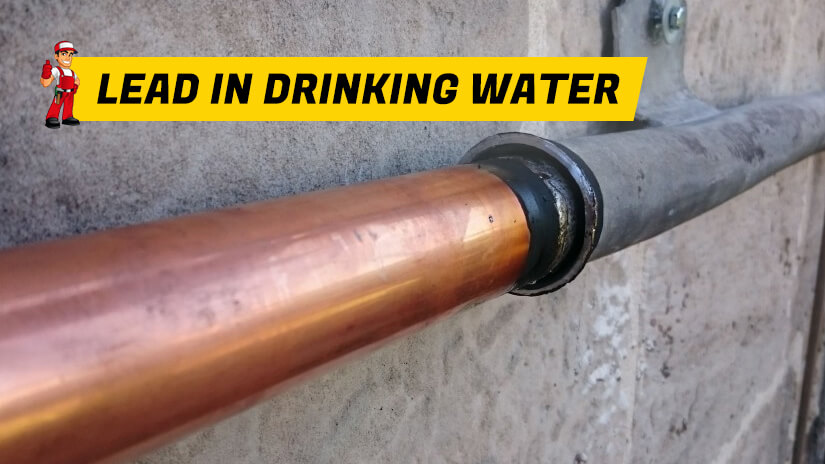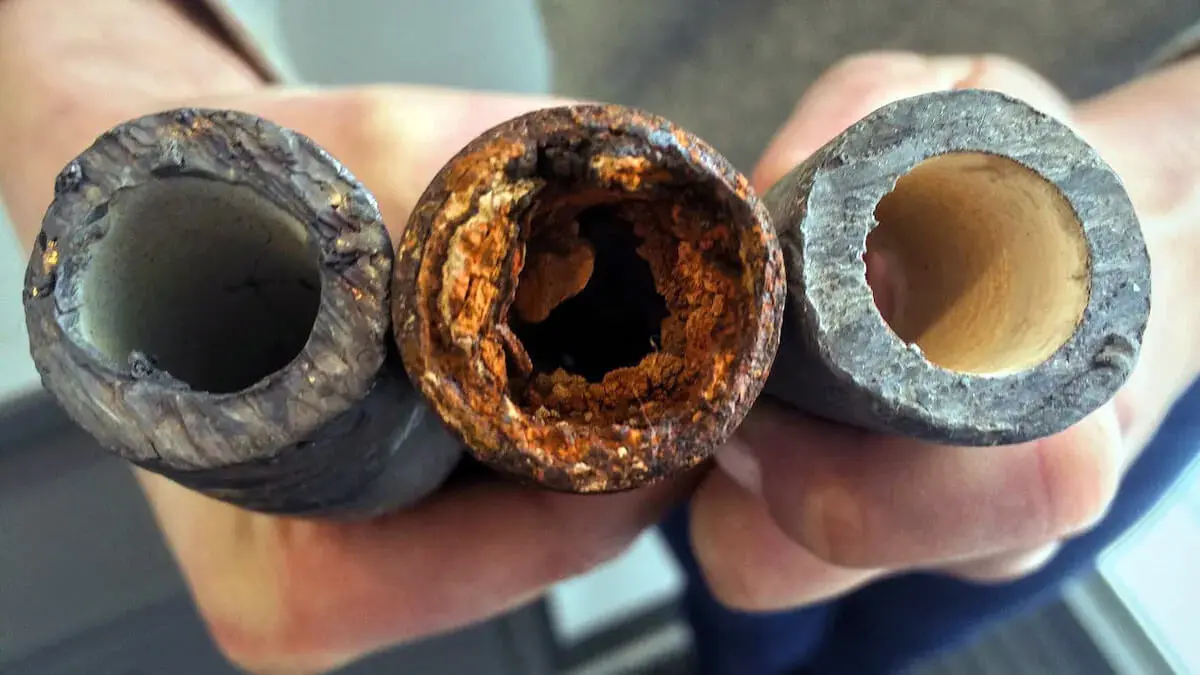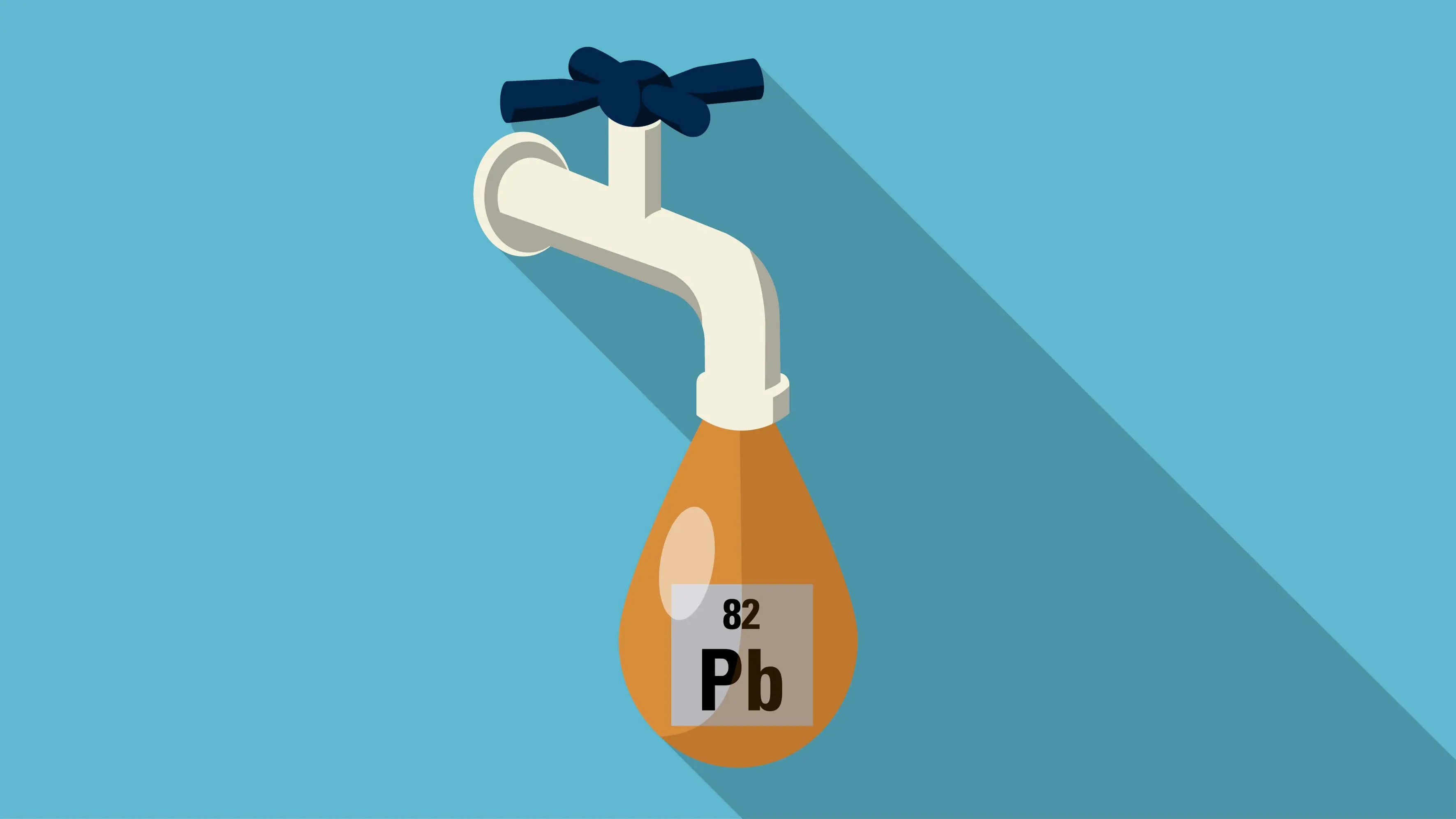Finding something unusual in your water is never ideal. Lead contamination in pipes or tank water should be treated as an urgent matter. It’s crucial to contact a professional plumber straight away. Have you had your water tested to check for lead levels and overall quality?
Lead, an element symbolised as Pb (from the Latin 'Plumbum’), has the atomic number 82. It’s a dense and toxic metal, heavier than many common substances.
Exposure to lead may significantly affect health, especially in children and pregnant women. When exposure becomes high, it may even attack the brain and nervous system, causing coma, seizures, and potentially death. The problem with most contaminants, especially lead, is that you can’t see, taste, or smell lead in your water supply, putting you at higher risk.

Lead is present in our environment, including soil, air, and water. It can also be found in tap water, often coming from lead pipes, solder, brass fixtures, or other plumbing materials.
It enters the drinking water once the plumbing substances comprise lead corrosion, specifically in the regions where water’s acidity is high and water’s mineral content is low, eroding the pipes and plumbing system.
Need a Plumbing Service?
Within homes with lead pipes, they connect the water main to the house, which is called the lead service line. Also, these ducts are generally a crucial place of origin for lead inside the water.
In all probability, lead pipes are found in the oldest cities and houses established before 1986. In homes with no lead service line, the issue faced is the aluminium or chrome-plated aluminium valves and plumbing with an alloy of lead.
Australia enforces strict regulations on safe drinking water, allowing no more than 0.01 mg of lead per litre. This aligns with global standards. Be sure to understand these guidelines as part of a broader lead reduction strategy.
Lead in drinking water.
Lead pollutants exposure and lead poisoning in drinking water can be minimised.
The fundamental way of getting lead toxic in drinking water is not the oldest pollutants of the water, such as fuels, used batteries, or even some dangerous debris; the fundamental way is the dispersal procedure utilised to provide water to your house and, most essentially, the plumbing system in your home.
The plumbing in your house is one of the main ways of lead exposure in the water you drink.
Be mindful that pets are also exposed to lead in their drinking water if you have pets.
As mentioned, older homes, particularly those built pre-1930, often used lead pipes. Between 1930 and 1980, copper became common, although lead alloys were still present.
During the 1950s and 1960s, new builds started to incorporate stimulated water lines.
Currently, this type of piping is rare, except in certain water applications. When these pipes corrode, they rust internally, causing the water to become discoloured, turning yellowish, brown, or reddish.
Even newer homes aren’t necessarily safe from lead issues. Data indicates that even buildings constructed as recently as five years ago can have elevated lead levels.
Pre-1986 buildings often contain some lead plumbing.
The steps to avoid lead in drinking water

Implement testing lead in water and avoid the prospect of contact with lead. Here are some tips on reducing lead exposure from the household’s plumbing.
1. Keep water running to rinse the lead out
If the water has not been used for a long time, keep the tap on for 30 seconds to 3 minutes or until it gets cold before drinking or using it for cooking. This helps flush out lead as well as mineral deposits and mineral buildup that may accumulate in copper pipes or corroded plumbing. Doing so also relieves any pressure caused by sediment buildup that could otherwise force water irregularly through fixtures like your shower head or only one tap.
2. Make sure to utilise fresh and cool water in cooking and preparing formula
Never use hot water from the tap for cooking or drinking—especially for babies—because lead dissolves more rapidly in hot water. Instead, rely on cold drinking water to limit exposure to lead and avoid disturbing contaminants that may result from a faulty pressure regulator or inconsistent water delivery due to local water supply issues.
3. Use a filter to stay safe
Not every water filter is certified to reduce lead, so it’s essential to install one properly and maintain it according to manufacturer instructions. You may also want to get a pressure test done by a professional plumber to ensure your water pressure regulator is functioning correctly and supplying consistent pressure throughout the home.
4. Clean the tap inflater regularly
Tiny particles from plumbing systems, such as flakes from corroded plumbing, can accumulate in the tap inflater. Routine cleaning can minimise exposure and reduce the risk of leaking pipes or even a burst pipe caused by prolonged mineral or lead corrosion.
5. Opt for purchasing low-lead installations
ISince 2014, pipes, fittings, and fixtures must contain less than 0.25% lead. When upgrading, work with a reputable plumbing company or local plumber to ensure new installations meet the current standards and are less likely to corrode or leak, which also helps prevent future plumbing issues.
Need a Plumbing Service?
6. Take tests of your tap water to find the content of lead
Before sampling, do not use the water for at least 6 hours to ensure accurate results. These tests can reveal hidden problems in your system, such as contamination caused by a faulty pressure regulator or fluctuations linked to a recent power outage that could affect water quality or pressure regulation.
7. Take care of growing and developing bodies
Young children, pregnant women, and nursing mothers should only consume filtered or bottled drinking water. This avoids unnecessary exposure to lead and protects against contaminants exacerbated by local water supply issues or outdated infrastructure.
8. Consider replacing the lead service line
Australia still has around 3.3 million lead service lines (LSIs), many of which contribute to water contamination. A professional plumber can help assess your system and recommend pipe replacements to eliminate old lead sources and restore normal water pressure.
9. Cut down erosion and test the chemistry of water
Using corrosion control treatments (CCT) can help stabilise drinking water chemistry and reduce erosion inside your pipes. This is especially important in older homes where mineral buildup and corroded plumbing may already be present.
10. Know more about the levels of lead in your community
Public water systems publish Consumer Confidence Reports (CCRs) annually. These include updates on water quality, system upgrades, and other critical data to help residents understand the root cause of any water-related issues.
11. Use the method of distillation
Although energy-intensive, distillation effectively removes lead and other heavy metals. It is a reliable solution when dealing with lead in the absence of a properly functioning water pressure regulator or if you’re experiencing pressure instability.
12. The method of filtration through carbon
Some carbon block filters are certified for lead removal but may lose effectiveness over time. Always follow manufacturer instructions and consult with a local plumber to determine if this method suits your home’s pressure and water quality setup.
13. The process of reverse osmosis
Throughout the reverse osmosis treatment of water, the water is given pressure (by the household water compression) with the help of some filtrates.
The layer in the reverse osmosis system filters out the lead and various other pollutants, only letting water filter through. The contaminants are rinsed out, allowing you to drink filtered, clean, healthy water.
A reverse osmosis system is a highly efficient procedure for filtering water with the lowest production cost. It consumes zero electricity and is extremely easy to use, maintain, and clean.
14. Consider changing the piping and drainage system of your house
First, ensure lead-contained piping systems or installations in your home.
If you are assured of having lead-containing systems, then a certified plumber may greatly help in this cause because only they know how to plumb better than anyone else.
Change the plumbing inside the household to contain even slight chances of lead. Rinse cold water taps if you furnish some new piping systems or installations.
Changing the home plumbing components is highly effective when the lead’s source is inside the home’s plumbing systems. If the lead arises from the lead service line inside a public water system, this technique may not benefit greatly.
Need a Plumbing Service?
Keeping Your Family Safe

Contact your water company and local health department if your home has lead pipes. In the end, the only sure method to minimise the danger of lead is to remove all the pipework containing lead from the house. Changing the pipes between the tap and the house is the obligation of the house owner.
When the pipes are renewed, you can contact the plumbing service to restore the tiny parts of lead in the service pipeline between the main line of water in the area and the house’s value.
Also, you can reduce lead in water by using a certified filter to remove lead. Or you can opt to drink bottled water, which is more expensive.
A treatment technique for lead is known as the Lead And Copper Rule, which requires a water system to handle the corroding.
This regulation has a system to accumulate the water samples from the tap systems with plumbing substances comprising lead.
When higher than 10% of the samples of tap water pass the action level of the lead of 15 parts for every one billion, in this case, water systems are needed to perform some other tasks, which include:
- Performing other tasks maximises the erosion maintenance treatment (for the water systems that serve 50,000 individuals who do not have fully maximised erosion control).
- Educating people about the exposure to lead in drinking water and the steps they can take to minimise their exposure to lead.
- Changing the lead service line’s divisions (lines that join frequency mains to the people) according to the control of the water system.
Lead is unusual in that various leads in drinking water become apparent from the plumbing in houses or buildings. The solution mainly diminishes the plumbing and installations that contain it; however, this takes time and money. If you want to purchase a house, you can always have the pipes inspected and water tested to determine the supplies of your new property.
In the meantime, every empirical method to mitigate the complete exposure to lead, including erosion control, must be executed. If you are unsure, always ask your local plumber any questions about shown in tap water.














